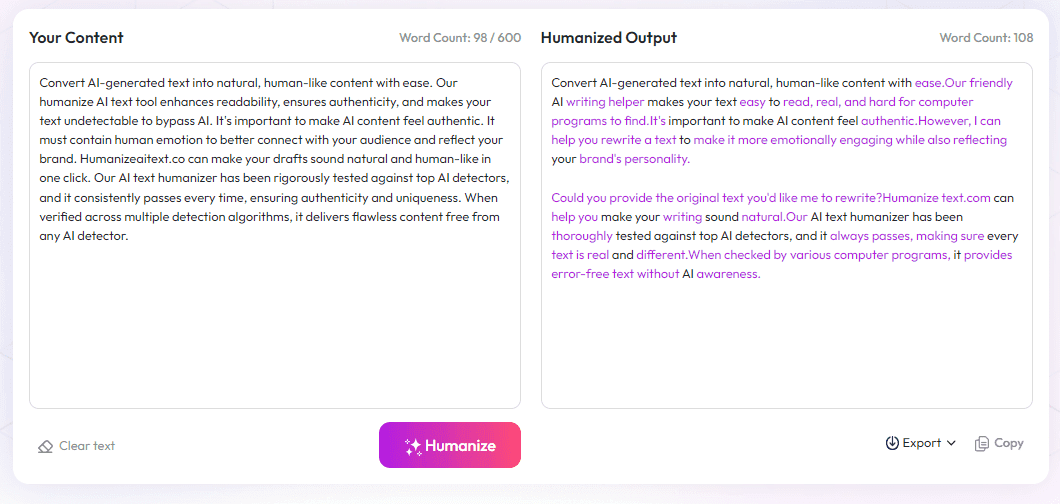Table of Contents
Struggling to find your personal brand message? You're not alone—many feel stuck trying to explain what makes them unique. But don't worry, with a few simple steps, you can uncover a clear message that truly represents you. Keep reading, and I’ll guide you through a straightforward way to craft a message that connects and leaves a lasting impression.
Key Takeaways
Key Takeaways
- Find a personal brand message that is clear, short, and genuine. It should quickly show who you are, what you do, and what makes you special.
- Know your audience well—understand their problems and needs. Tailor your message to show how you can help solve their biggest challenge.
- Keep your message consistent across all platforms — website, social media, emails — so people remember and trust you.
- Add personal touches like stories or your voice to make your message relatable and authentic.
- Regularly review and refine your message based on feedback, new skills, or changing goals to stay relevant.
- Use your core message to build trust and authority by sharing helpful content and engaging with your audience.
- Track how your message performs through responses and engagement. Adjust your language or focus to improve how well it connects.

Let's start with the most crucial step: understanding what a personal brand message really is. It’s a short, clear statement that quickly shows who you are, what you do, and what makes you stand out.
The goal is to craft a message that feels authentic so it resonates with your audience and builds trust. When your message is genuine, 86% of consumers say they value authenticity when choosing brands or services .
Think of your personal brand message as your professional handshake—you want it to be memorable and compelling. It doesn’t need to be lengthy; keeping it to one or two sentences ensures it’s easy to remember and share.
Next, knowing who you're talking to makes all the difference. Identify your ideal audience—whether it’s entrepreneurs, creatives, or small business owners—and learn about their goals, needs, and where they hang out online.
For instance, if you’re targeting small business owners struggling with marketing, your message should reflect an understanding of their challenges. Describe their pain points and how you help solve them—people trust recommendations from thought leaders 92% more than traditional ads .
This isn’t just about listing skills; it’s about connecting with their real struggles and showing them that you’re the person who can help them succeed.
Once you grasp your audience’s needs, identify the main problem you help solve. Pinpoint that one big challenge your audience faces, whether it’s increasing sales, building brand awareness, or streamlining operations.
Clarify how you assist them—what results can they expect? If you’re a coach helping entrepreneurs grow their email list, your message could highlight your unique approach to transforming email marketing into a steady revenue stream.
By focusing on the core problem you solve, your message becomes more targeted and powerful. Remember, people are more likely to trust and remember a brand that clearly communicates how they can benefit from your expertise.
And before finalizing your message, look at successful personal brands in your niche for inspiration. See how they craft their statements and adapt their techniques to fit your style and mission. Sharing your message and getting feedback from trusted peers or mentors can help ensure it hits the right notes.

8. Incorporate Personalization to Make Your Message Stand Out
People want to feel like your message is crafted just for them, so adding personal touches can boost engagement.
Use your own voice and share your unique perspective to make your brand more relatable and authentic.
Consider segmenting your audience and tailoring different versions of your message to specific groups for better resonance.
Incorporating personal stories or experiences can help convey empathy and build a stronger connection.
Tools like (https://automateed.com/how-to-write-a-foreword/) can assist in making your messaging more targeted and effective.
9. Consistently Refine and Evolve Your Message
Your personal brand message shouldn't be set in stone; it needs to grow as you do.
Regularly revisit your message, especially after gaining new skills, experiences, or shifting your focus.
Gather feedback from clients, peers, or mentors to see how your message is perceived and make necessary adjustments.
Keep an eye on competitors and industry trends to stay relevant and ensure your message continues to stand out.
Remember, a flexible message adapts to feedback and changes, making your brand more resilient and authentic.
10. Integrate Your Personal Brand Message Across All Platforms
Consistency is key—make sure your message appears everywhere your audience interacts with you.
This includes your website, social media profiles, email signatures, and even offline networking events.
Align your visuals, tone, and messaging style to reinforce your brand identity.
For example, if your message emphasizes creativity, ensure that your visual branding and content reflect that vibe.
Using a single, clear message across platforms helps increase recognition and trust among your audience.
11. Leverage Your Personal Brand to Build Trust and Authority
A strong personal brand message can position you as an expert in your niche.
Share valuable content, insights, and success stories that showcase your skills and knowledge.
Engage with your audience regularly to demonstrate your commitment and reliability.
Take opportunities to guest post, collaborate, or speak at industry events to increase your credibility.
Over time, people will see you not just as someone who talks about what they do but as someone who genuinely helps others succeed.
12. Measure the Effectiveness of Your Personal Brand Message
To make sure your message hits the mark, track engagement metrics like likes, shares, and comments.
Pay attention to how your audience responds and whether they take desired actions, like signing up or reaching out.
You can also use surveys or direct feedback to see if your message resonates on a personal level.
Adjust your language, tone, or focus based on what the data shows to optimize your impact.
Remember, refining your message isn’t about changing your story but about communicating it more clearly and effectively.
FAQs
Your personal brand message is a short, clear statement that explains who you are, what you do, and what makes you unique or helpful to your audience.
Identify who you want to reach by considering their goals, challenges, and location. Think about their needs and what solutions you can provide for them.
Start by defining what makes you different, then craft a short statement that highlights your main strengths, using your natural voice and focusing on the value you offer.
Testing your message with others helps ensure it resonates and is understood. Feedback allows you to refine your statement, making it more compelling and aligned with your audience’s needs.



